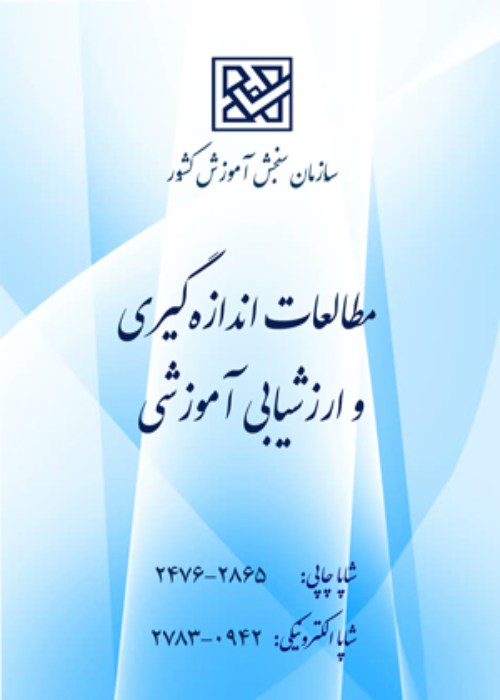Designing and Explaining the Model of Knowledge Management Effectiveness on the Effectiveness of Service Organizations: A Mixed Approach
The various successes of organizations are related to knowledge management in terms of their ability to provide services. Therefore, examining the relationship between knowledge management and organizational effectiveness is very important. Researches have shown that, in general, knowledge management has a significant positive relationship with organizational effectiveness, but the extent of this relationship varies based on different studies. The purpose of this study was to determine the components of knowledge management firslty, and then to examine their impact on organizational effectiveness.
For these purposes, mixed methodology was used with the priority of qualitative method over quantitative one. In the qualitative stage, first based on theoretical and experimental background, the components of knowledge management were identified, and then with the help of 11 expert evaluators by performing three stages of Delphi panel, the degree of agreement on the components with Kendall coefficient (W) was determined. In the quantitative stage, based on the results of the qualitative part, a knowledge management questionnaire was prepared and distributed along with the organizational effectiveness questionnaire among 293 people who were selected by the convenince sampling and data were collected. The construct validity of both questionnaires was assessed by confirmatory factor analysis. In both questionnaires, the fit of the model with the data was acceptable.
The Cronbach’s alpha of knowledge management and organizational effectiveness questionnaires were 0.96 and 0.93, respectively. Indicators of knowledge management construct, with respct to the impact of this construct on them respectively are: knowledge application, knowledge internalization, knowledge externalization, knowledge sharing, knowledge creation and knowledge retention. Indicators of organizational effectiveness structure, with respect to the impact of this construct on them respectively are: employee performance, operational efficiency, client's mental image, innovation, profitability and service development. Structural equation modeling (SEM) and path analysis were used to analyze the quantitative data. The results revealed that knowledge management positively influenced organizational effectiveness, such that about %7.6 of its variance is explained by knowledge management, which is considered as the average effect size. Among the knowledge management components, only knowledge creation, knowledge retention, and knowledge application positively influenced organizational effectiveness. According to the results of path analysis among the components of knowledge management, only knowledge creation and knowledge retention have a positive effect on the organizational effectiveness variable (i.e. total organizational effectiveness score) (P <0.05), in the presence of these two variables other components have a significant effect, and they have no effect on the total score (P> 0.05). Together, these two variables accounted for about 20% of the effective variance (Table 10). The results of path analysis regarding the effect of different components of knowledge management on different components of organizational effectiveness showed that only three components of service development, profitability and innovation of organizational effectiveness are related to different components of knowledge management. In the service development component, only knowledge creation, knowledge retention and knowledge application have a positive and significant effect on it, so that about 41% of the variance of the service development component (dependent variable) by the components of knowledge creation, knowledge retention and knowledge application (independent variables) is explained. In the equity component, only the effect of the components of knowledge creation and application of knowledge is significant, so that about 32% of the variance of the profitability component is explained. In the innovation component, only the effect of the components of knowledge creation and knowledge retention is significant, so that about 18% of the variance of the innovation component is explained. There is a significant relationship between knowledge management effectiveness and organizational effectiveness in various studies.
It can be concluded that knowledge creation, retention and application need to be emphasized in achieving organizational effectiveness. Long-term planning to further enhance the effectiveness of knowledge creation functions; improving and strengthening programs for the effectiveness of knowledge storage functions; improving and strengthening programs for the effectiveness of knowledge sharing functions; long-term planning to further enhance the effectiveness of knowledge utilization functions; long-term planning to further enhance the effectiveness of knowledge internalization functions and long-term planning to further enhance the effectiveness of knowledge externalization functions are areas that need to be emphasized.
- حق عضویت دریافتی صرف حمایت از نشریات عضو و نگهداری، تکمیل و توسعه مگیران میشود.
- پرداخت حق اشتراک و دانلود مقالات اجازه بازنشر آن در سایر رسانههای چاپی و دیجیتال را به کاربر نمیدهد.


